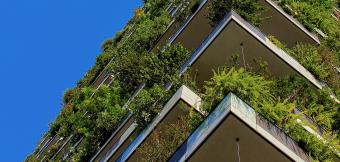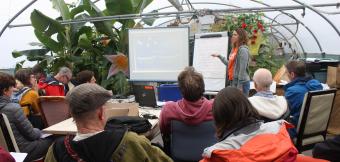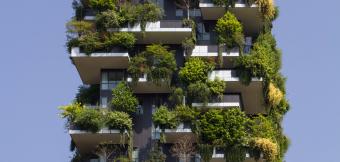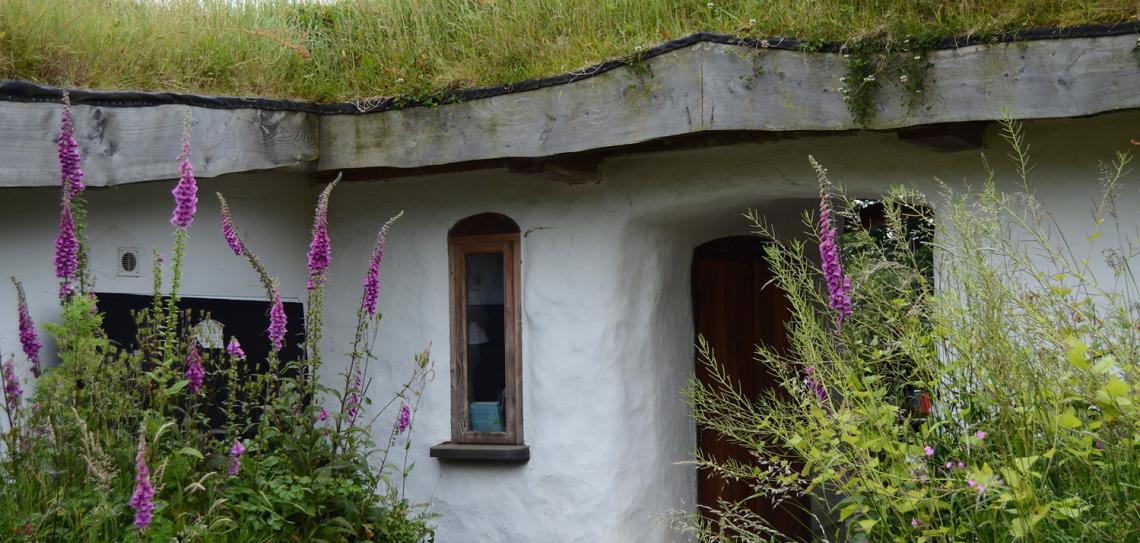
Build with green materials
Cement production contributes 4% of all fossil fuel emissions. Alternatives like wood, bamboo and hemp absorb CO2 as they grow and lock it in when used in buildings. Reclaimed, recycled materials further reduce construction's carbon footprint.

Why are green building materials important?
Green building materials contribute to tackling climate change in three ways:
-
minimising the release of greenhouse gases during their production
-
absorbing and storing carbon for the long-term
-
improving the energy performance of completed buildings.
They can also have other important environmental benefits, such as:
-
coming from natural, renewable sources
-
being obtained locally to reduce transportation
-
being reclaimed/ reused from nearby sites
-
using less water in their production
-
minimising air and water pollution
-
minimising adverse effects on human health
-
creating built environments that are well integrated with natural processes.
Ten green alternatives to concrete and cement
Adapted from Alternative building materials for green construction
For every 1,000kg of cement, around 900kg of C02 is emitted. With four billion tonnes produced every year, cement is responsible for 4% of the world’s fossil fuel emissions. We urgently need alternatives:
-
Straw bale is a low impact, low carbon material that requires no processing. It is affordable and provides very high levels of insulation.
-
Grasscrete replaces standard concrete in parking lots and driveways. It is 47% concrete and 53% holes filled with grass. It drains like a lawn, which reduces flood risk, and forms a bio-filter to remove pollutants.
-
Hempcrete is made from the woody Cannabis sativa plant, combined with lime. It provides an airtight, yet breathable and flexible insulation.
-
Bamboo produces oxygen and absorbs carbon dioxide while growing, is easily grown and harvested, and is strong, cheap and aesthetically pleasing.
-
Recycled plastic is very energy-efficient. It can be moulded to shape, can be easily coloured, is hard wearing and easy to clean.
-
Wood is a classic and durable green building material that has longevity, aesthetics and flair. Wood is 50% carbon, absorbed from the air while the tree is growing. Manufacturing wood for construction is much less energy-intensive than concrete, steel, cement or glass. Timber should be FSC certified to ensure a sustainable source.
-
Rammed earth has many strengths: high thermal mass, temperature and noise control, strength and durability, low maintenance, fire proofing, load bearing and pest deterrence.
-
Mycelium, or living bricks, is a styrofoam/fibreglass substitute made from fungi. As insulation it outperforms traditional fibreglass, but it is not yet commercially available.
-
Ferrock is a carbon-negative cement alternative made of iron carbonate and ground glass - 95% recycled materials.
-
Timbercrete is a combination of timber waste and concrete. It is lighter than solid concrete with greater strength and insulating capabilities. It can be nailed, screwed and sawn easily.
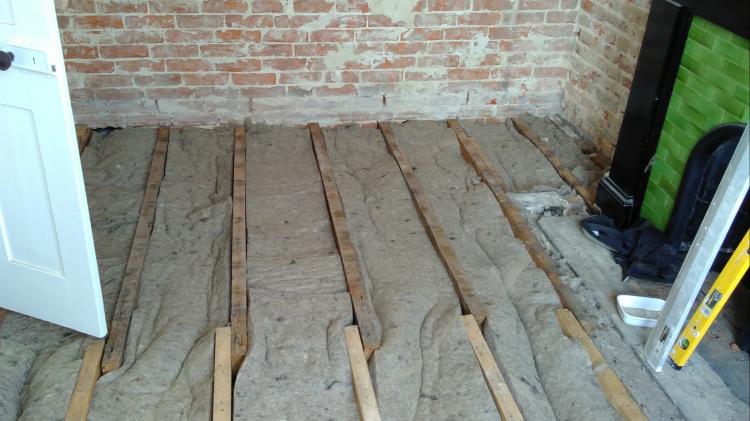
Five natural insulation materials
Adapted from Sustainable Build
Conventional insulation is made from petrochemicals; the energy used in manufacture is very high, and it contains chemical fire retardants and adhesives. Natural insulation products are made from renewable, organic resources and have low embodied energy. They can be reused and recycled, and are fully biodegradable. They are non-toxic, allergen-free and can be safely handled. Unfortunately, these alternatives are currently up to four times more expensive, but the environmental and health benefits outweigh their costs.
-
Sheep's wool has very low embodied energy and performs exceptionally well. It usually needs to be treated with chemicals to prevent mites and reduce fire risk.
-
Flax and hemp have low embodied energy and are often combined in the same product. They typically contain borates as a fungicide, insecticide and fire retardant.
-
Cellulose is made from recycled newsprint and other fibres. It can be blown into cavity walls, floors and roofs, and is also available in quilts, boards and batts.
-
Wood fibre is made from wood chips compressed into boards or batts. It has very low embodied energy and uses forestry by-products.
-
Expanded clay aggregate consists of small clay pellets that can be used in foundations. They have excellent thermal insulation properties, but high embodied energy.
Other green materials
- Paint and wood treatments can have serious effects on the environment. Negative impact can be reduced by accurately estimating paint quantities so waste is minimised, and using environmentally-friendly paints (low VOC; stated on the tin).
- Plants can be incorporated through green roofs and green walls. They can provide insulation, improve the landscape, absorb rainwater, clean the air, provide wildlife habitat and lower air temperatures.
- Reclaimed materials like doors, windows, bricks and fireplaces can be salvaged from yards, skips and antique shops. Structural elements like timbers and ironwork can be found in specialist yards.
- Recycled materials that can replace conventional materials include fly ash, blast furnace slag, demolition waste, reclaimed asphalt, used tires and glass beads. Demolition waste, petroleum waste and old plastic can be turned into pavements.
- Construction tools and vehicles should be efficient, serviced regularly and used wisely to minimise emissions.
Always make sure you obtain experienced advice on the practicalities of the various green building options for your project, including in relation to local building control and planning issues.
Picture credits: 1) https://www.flickr.com/photos/permaculture-association 2) NeuPaddy - Pixabay 3) Philipp Grunewald
In your next DIY project, use only green materials
When undertaking building work always choose green materials
Lobby your local builders' merchant to improve their range of green materials
Push for the use of green materials in community buildings like schools

